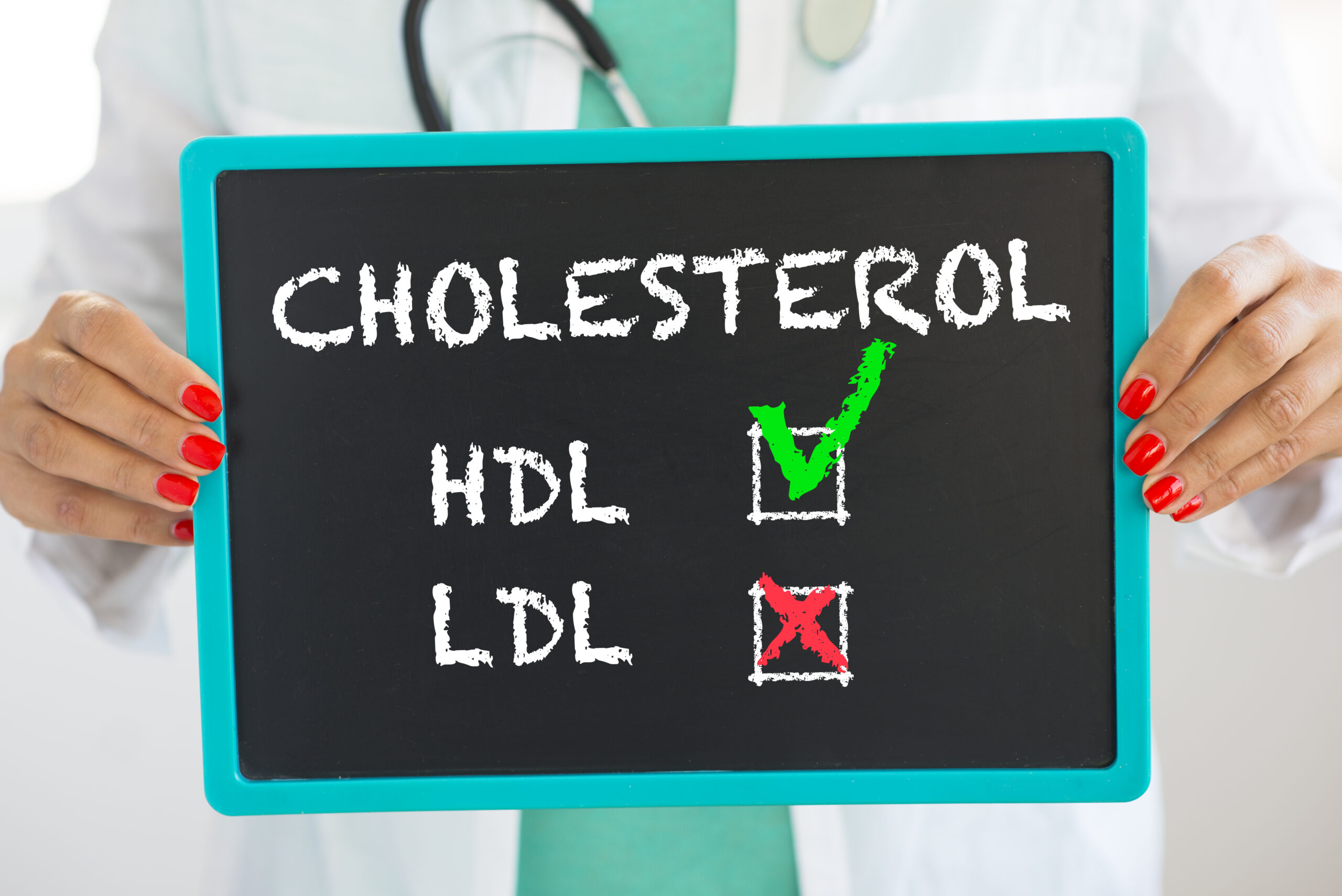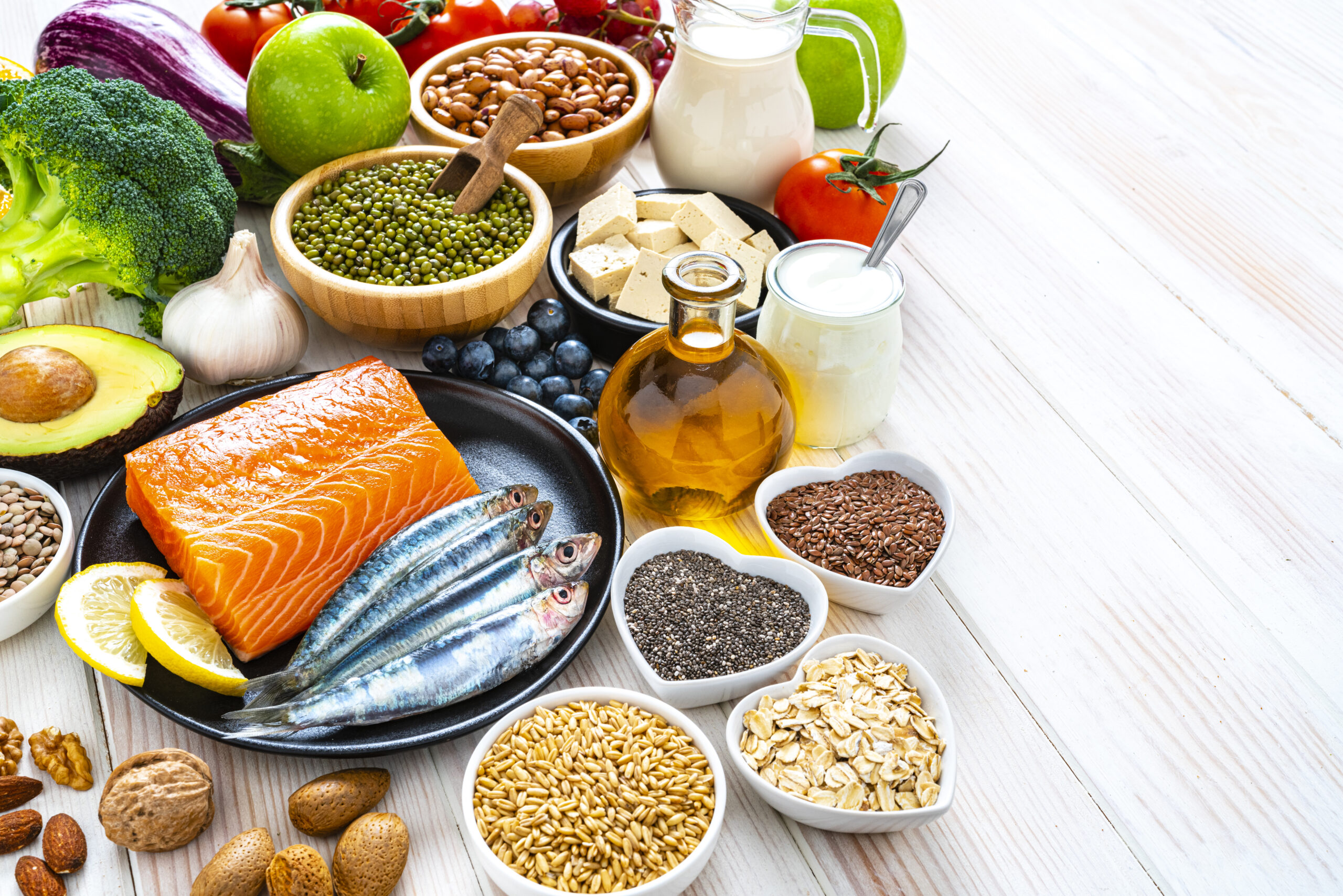At healthy levels, cholesterol is useful to the body including helping the body’s cells work as they should. Cholesterol levels are an important measure of heart health, so no one wants to hear they have high cholesterol. But there’s a form of cholesterol that’s good for you and you can use that to your advantage.
High-density lipoprotein (HDL) is the good type of cholesterol you’ll find on a lipid panel test that screens for your risk of cardiovascular disease. The other is low-density lipoprotein (LDL). Higher levels of HDL cholesterol are linked to a lower risk of heart disease. Having high levels of HDL also has antioxidant as well as anti-inflammatory effects.

HDL helps move cholesterol from the arteries to the liver, where it can be metabolized and excreted. If HDL levels are low, the body cannot efficiently get rid of cholesterol, which can lead to a buildup of plaque in the arteries. To keep your system running at optimally, you want an HDL of 50 milligrams per deciliter of blood or higher. Normal range is 40 to 59 mg per deciliter. Below 40 mg per deciliter, your risk of heart disease rises.
In addition to medicines, there are habits and practices that can help raise HDL cholesterol that often provide other health benefits. Here are five tips for increasing your HDL or “good” cholesterol.
Maintain a healthy weight
Carrying extra pounds can increase LDL levels and push down your HDL count. Work with your provider to determine if your current weight is heart healthy. If weight loss is the right choice for you, there’s good news, it doesn’t take much to see a measurable difference in your cholesterol. In fact, the American Heart Association says that a weight loss of just 5% to 10% can improve both your HDL and your LDL numbers.
Quit smoking
Add high cholesterol levels to the long list of negative consequences from smoking. One of its negative effects of smoking and vaping is a suppression of HDL cholesterol. The good news? Quitting smoking brings rapid results as research shows that HDL numbers typically rise in fewer than three weeks after you quit. HDL levels.
In a one-year study of more than 1,500 people, those who quit smoking had twice the increase in HDL as those who resumed smoking within the year. The number of large HDL particles also increased which further reduced heart disease risk. Even in studies where HDL cholesterol levels did not increase after people quit smoking, HDL function improved, resulting in less inflammation and other beneficial effects on heart health.
Exercise
Studies show that a wide variety of exercises, including strength training, high intensity exercise, and aerobic exercise, are effective in raising HDL cholesterol. Studies also indicate that it can boost the antioxidant and anti-inflammatory effects of HDL cholesterol. The biggest increase in HDL typically occurs with high intensity exercise. Even lower intensity exercise can increase HDL’s anti-inflammatory and antioxidant capacities.
Eat healthy fats
Trans fats increase LDL cholesterol and lower HDL cholesterol levels. There are two types of trans fats, one occurs naturally in animal products, including full fat dairy. The other is artificial trans fats or partially hydrogenated fats which are present in margarines and processed foods.
Choose monounsaturated and polyunsaturated fats, which are found in plants, nuts, and fish.
Olive oil in the diet is one possible way to increase HDL cholesterol levels as it is one of the most healthful fats around as it contains antioxidants called polyphenols. Some studies have shown that coconut oil also tends to improve the ratio of LDL to HDL cholesterol.

Eat fatty fish often
Some research suggests that eating fatty fish or taking fish oil supplements may also help raise low levels of HDL cholesterol. Eating fatty fish several times per week may help increase HDL cholesterol levels and provide other benefits to heart health. Some types of fatty fish that may help raise HDL cholesterol include salmon, herring, sardines, mackerel and anchovies.
Improving your cholesterol begins by knowing there’s an issue. Getting lipid panel test results can help guide you toward lifestyle adjustments and potential treatments that can improve good cholesterol and lower the bad.
Do you know your cholesterol numbers? If you don’t know your numbers and are concerned about your HDL & LDL, it’s time to schedule an appointment with your healthcare provider. West Tennessee Medical Group has providers close to home, schedule an appointment today!
